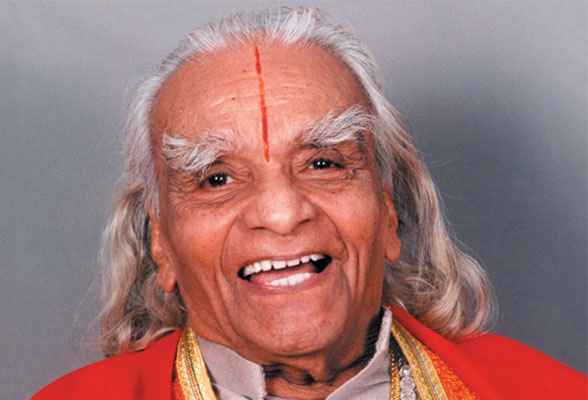
Since B.K.S Iyengar’s death last week at the age of 95, there have been many articles written about him. The articles make note of his significant contribution to the yoga world along with the many, many teachers he has influenced. The social media posts, Â which include statements by well-known teachers, acknowledge him as “Guruji” and provided me with a glimpse into the idea of studying with a true master. I have practiced and been trained by Baron Baptiste and recall from my first training with him, the many times he referred to “Mr. Iyengar.” At the time, I had zero knowledge of what Iyengar yoga was and nothing to compare it to. Today, after almost 12 years of studying, practicing and teaching (a drop in the bucket, mind you) I have a much broader idea of yoga as a discipline and a great deal of respect for this wonderful man I never met.
I could not help but delve into the articles about Mr. Iyengar. In today’s yoga world, there are so many variations, styles and contemporary presentations of yoga practice that it is easy to stray further and further away from the basics. Many students have  little to no idea of the history of yoga and the foundational principals underlying the practice. This isn’t necessarily a bad thing; it’s just the nature of the beast at this point. But the articles about Mr. Iyengar gave me a chance to open my mind to new ideas and reinforce some of the foundations of yoga practice: breath, gaze, foundation, alignment, connecting to spirit through focus on the body and most importantly, yoga being accessible for everyone, regardless of their current physical capabilities.
It wasn’t a conscious choice but after a few days of reading and pulling out my old book of his, “Light on the Yoga Sutras of Patanjali,” I found my classes took on a new direction. I let go of my current focus of changing things up from class to class. I let go of my theme of focusing each class on an anatomical theme, like sidebending or twists. I went back to one of the original basic sequences I was taught as a Baptiste teacher but I brought into it a new focus from my studies in anatomy. I found myself giving students more time in silence to connect to their breath. I found myself being as succinct as possible in order to leave space for students to delve into each pose more. With this approach, I found that I was challenged to select what I felt would be the most effective and succinct way to describe each pose.
I remember one of the quotes from a teacher that practiced with Mr. Iyengar noted that he approached a student with one leg and asked her why she was not attempting Half Moon. When she gestured to her missing leg, he spent 15 minutes assisting her with props so she could try the pose. This theme of “everyone can access yoga” resonated with me as I taught over the weekend. It challenged me to present poses that were highly accessible but also think of clear and effective ways to include some challenging poses as well. Sometimes, as a teacher, we can make assumptions about what our students are capable of, when in fact, they’re able to do much more.
The final piece I really loved about all the articles was the theme that through connection to the body, one finds connection to spirit. In his famous book, “Light on Life,” he states, “It is through your body that you realize you are a spark of divinity.” I know I have found this to be true in my own practice, as through the movement and deep breathing, I find a connection to my true spirit. I love this idea because it suggests that we don’t necessarily have to talk about spirit and spiritual themes but if we provide the right environment and activity, we will create the conditions for people to access it for themselves.
I will be continuing with this theme throughout this week. I am looking forward to feeling the freedom that not having to think about a sequence provides and also look forward to the magic of connection to spirit.
Namaste.
